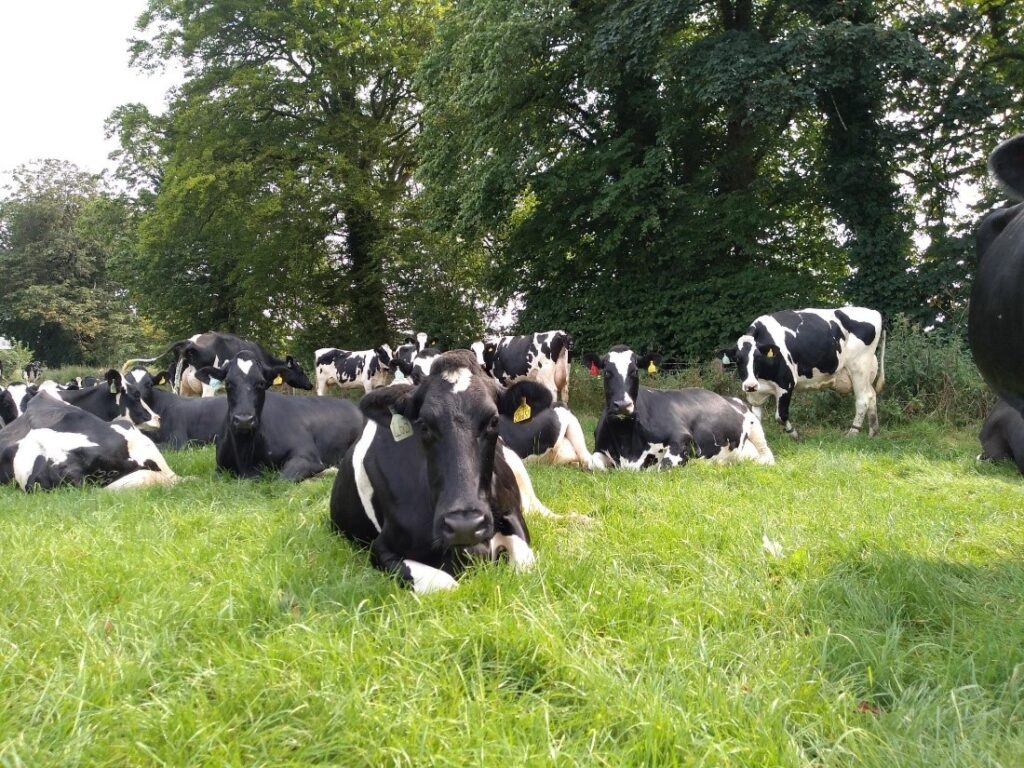Cow Grazing Strategies in Wet Conditions
3 April 2024When large amounts of rainfall leave grazing fields saturated, how do we deal with wet conditions to manage the grazing platform and minimise damage to fields and gateways from poaching?

Firstly, know your fields - walk all grazing fields to establish what ground conditions and grass covers are like. Graze the driest, most sheltered fields with the lowest grass covers first. When changing from a silage-based diet, cows tend to adjust much quicker to grazing lower covers. As the weather improves, graze the fields with the heavier covers. Cows that are used to grazing will achieve a better residual on these heavier covers compared to cows that are transitioning off silage.
On-off grazing is a useful management strategy where stock have access to a paddock for a limited time, with the aim of maximising grass intake. The grazing period should be between two to four hours after each milking, as it is usually in the early morning and late afternoon when cows tend to naturally concentrate their grazing efforts.
Cows should be turned out with an appetite so that they just graze (which is also why allowing access to grazing after milking works well). More damage will be done to swards where cows do not intensively graze and so wander around. Once they have had their fill, usually indicated by when they start to lie down, move them off the area either indoors or to a sacrifice paddock to protect the grass and soil structure from being continuously poached.
For practical reasons it makes sense to carry out the afternoon milking slightly earlier so that sufficient grazing time is available post-milking for cows to have their fill before being housed at night.
On-off grazing works well with more accessible fields that are close to the steading and have multiple access points. Use of gravel or woodchip at gateways can help minimise damage to heavy trafficked areas. Back fences should be used to protect areas that have already been grazed.
Lower grass covers are better suited to on-off grazing and leaving a higher-than-normal residual should help prevent further sward damage. Cows will adapt to on-off grazing relatively quickly, within about two days.
Remember, badly damaged ground from poaching will reduce grass regrowth rates and this can be as much as 30-50% less grass for the second grazing rotation. Alternative management strategies for minimising damage from poaching in wet conditions include:
- Prioritise grazing lighter stock as heavier animals cause more ground damage in wet conditions.
- Reduce stocking density with smaller groups or if practical, reduce paddock sizes so that stock spend less time in them (limit to 24 hours).
- Pre-mowing - a useful tool in wet conditions to achieve a good residual but it also encourages better intakes from grass and limits how far cattle have to walk to get their fill, limiting poaching damage. As it will take cows a few days to get used to eating pre-mown grass, ideally start when the weather is dry.
- Zero grazing - while this does involve additional time and cost of running machinery to harvest and cart grass inside, there are many benefits:
- Utilises forage of the highest quality (both protein and energy if cut at the right stage).
- Maximises grass utilisation in the field, leaving a clean swath for good regrowth.
- There is a potential saving in protein concentrates as the protein in fresh grass will be higher than in grass silage.
When grazing stock in wet conditions there are greater risks of not meeting their dry matter intake and energy requirements to maintain productivity, and supplemental feeding may be required.
For further advice on feeding cows and youngstock at grass please contact the Farm Advisory Service on 0300 323 0161 or email advice@fas.scot.
Lorna MacPherson, SAC Consulting
lorna.macpherson@sac.co.uk, 07760 990901
Sign up to the FAS newsletter
Receive updates on news, events and publications from Scotland’s Farm Advisory Service

